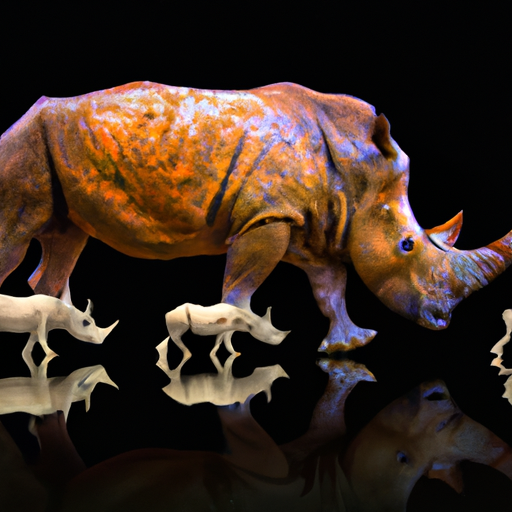 Introduction:
Introduction:
The world is currently facing an unprecedented crisis – the rapid extinction of countless animal species. This alarming trend, primarily caused by human activities, is posing a severe threat to the delicate balance of our planet’s ecosystems. In this comprehensive article, we will delve into the intricate web of factors leading to the extinction of numerous animals, explore the devastating consequences of their disappearance, and emphasize the urgent need for conservation efforts to reverse this catastrophic trend.
1. Deforestation and Habitat Loss:
One of the leading causes behind the decline of animal populations is deforestation. Vast areas of pristine forests are cleared annually to make way for agriculture, urbanization, and logging operations. Consequently, countless species, such as the critically endangered Sumatran orangutan, lose their natural habitat, pushing them to the brink of extinction. Additionally, deforestation disrupts intricate food chains and eliminates vital breeding grounds, leading to further decline in populations.
2. Climate Change and Global Warming:
The ongoing climate crisis is wreaking havoc on animal species across the globe. Rising temperatures, changing rainfall patterns, and extreme weather events, all attributed to human-induced global warming, have severe consequences on vulnerable creatures. Iconic species like the polar bear face dwindling sea ice, making hunting and breeding increasingly challenging. Coral reefs, home to a vast array of marine life, are bleaching due to rising sea temperatures, leading to mass die-offs and the loss of entire ecosystems.
3. Overexploitation and Illegal Wildlife Trade:
Human greed for animal products, driven by traditional medicine, fashion, and luxury markets, has resulted in the overexploitation of numerous species. The illegal wildlife trade poses an imminent threat to iconic animals like rhinos, elephants, and tigers. Poaching not only decimates populations but also disrupts social structures and ecosystems, leading to ecological imbalances and further endangerment.
4. Pollution and Chemical Contamination:
Industrial activities and improper waste management have led to the pollution of our air, water bodies, and soil, significantly impacting animal species. Chemical pollutants, including pesticides, heavy metals, and plastic waste, accumulate in the environment and contaminate food chains, causing reproductive disorders, weakened immune systems, and genetic mutations in animals. Aquatic creatures, such as dolphins and whales, suffer from ingestion of plastic debris, entanglement, and the destruction of their natural habitats.
5. Invasive Species and Disease:
The introduction of invasive species into new habitats creates competition for resources and disrupts native ecosystems. These invaders often outcompete native species, leading to their decline and potential extinction. Additionally, diseases transmitted by humans, such as the chytrid fungus, have decimated amphibian populations globally, highlighting the interconnectedness between human activities and the spread of wildlife diseases.
Consequences of Extinction:
The disappearance of animal species has far-reaching consequences, impacting both the environment and humanity itself. The loss of biodiversity disrupts intricate ecological relationships, leading to imbalances in ecosystems and potentially triggering cascading effects throughout food chains. Furthermore, it limits our understanding of the natural world and the potential medical advancements that could be derived from studying these unique animals. Moreover, the loss of iconic species robs future generations of the opportunity to connect with and appreciate the diversity of life on Earth.
Conservation Efforts and Hope for the Future:
While the challenges to combat extinction are immense, there is still hope. Conservation organizations, governments, and individuals worldwide are working tirelessly to protect endangered species and their habitats. Initiatives such as habitat restoration, captive breeding programs, and the establishment of protected areas are crucial steps towards preserving our planet’s biodiversity. Additionally, raising awareness, implementing sustainable practices, and advocating for stricter legislation against illegal wildlife trade are all vital components in reversing the extinction crisis.
Conclusion:
The ongoing extinction crisis is an urgent wake-up call to humanity. We are witnessing the loss of irreplaceable species due to our own actions. It is our collective responsibility to take immediate action to prevent further extinctions, restore damaged ecosystems, and ensure the survival of our planet’s animal kingdom. By valuing and protecting the diversity of life, we can secure a sustainable future for both animals and humans alike.
